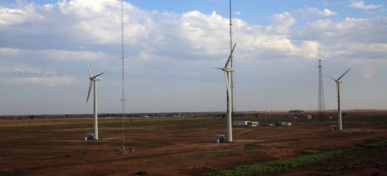House cuts clean energy funding, dragging down entire community of American innovators
This commentary originally appeared on Scientific American’s “Plugged In” blog.
In my last post, I discussed a House subcommittee’s shortsighted vote to slash funding for the U.S. Department of Energy’s (DOE’s) innovative Advanced Research Projects Agency – Energy (ARPA-E). I’m sorry to report that the rest of the House has now followed suit, passing a $30 billion energy spending bill that cuts a huge chunk out of clean energy programs.
Not only does the bill contain the subcommittee’s 81 percent cut to ARPA-E, it also guts energy efficiency programs and even rolls back progress in energy efficient lighting. The House’s embargo on funding for clean energy doesn’t just hurt our footing in the international race towards a new energy economy, it also drags down an entire community of American innovators working to achieve a sustainable future.
We deserve more than political posturing and moves as antiquated as the incandescent bulb. Right now, a convergence of environmental, economic and technological forces is transforming the global energy landscape. Just last month, the International Energy Agency (IEA) projected that renewable energy sources would eclipse nuclear and gas generation by 2016, and provide a quarter of the world’s energy supply by 2018. Renewable energy is unequivocally a major component of the energy landscape.
With the global rise of renewables, clean energy has become an inextricable component of energy science and engineering. Programs in sustainability, renewable energy, smart grid, and energy efficiency have emerged at major universities all over the United States. These programs popped up as fields like mechanical and electrical engineering identified climate change as a key challenge facing humanity. Engineers have always sought to apply scientific knowledge to overcome technical challenges and ensure human safety and progress. Now, more than ever, academic researchers are passionately seeking solutions to address global warming.
As top engineers and scientists have acknowledged the need to address the threat of climate change, so too have aspiring young scientists and engineers. Sustainability has become part of innovative educational programs across the country. Today, it is rare to see a science classroom without a miniature solar panel or wind turbine on its shelves. Why? Because students of all ages are compelled by the chance to design the next device or system that will help us overcome the challenges resulting from climate change. Students’ passion for clean energy helps them endure difficult subjects like math and science, making the U.S. more competitive internationally.
We owe it to these students to keep up the pace of clean energy education and research. Government funding agencies like ARPA-E and the DOE have a direct influence on science and engineering departments all over the country. Cutting these agencies has a ripple effect that hurts students, professors and other educators across the nation. Whether our elected leaders like it or not, researchers and academics will continue to explore the potential of the new energy frontier. The question is, will the government promote their efforts, or squander the momentum thousands of talented Americans have built up over many years of dedicated work?














Honestly... all one needs to do is look overseas at what other countries are doing, in terms of assisting small companies with seeing the light of day... South Korea, for example, grants money to small and medium sized companies who have PROVEN technology. Look, for example, at Leo Motors, an American incorporated company, based out of South Korea... they had to prove their technology worked and proved viable, before a single won was granted by the federal government. Proof that it is viable, in every facet, then, AND ONLY THEN, grant the money. Don't just throw money at a company just because they THINK it would be cool to see something come about, PROVE IT AND ITS VIABILITY, then back them.
George Orwell
July 17, 2013 at 7:59 pm